MARKETING
3 Steps to Sell More from Your Small Business Website
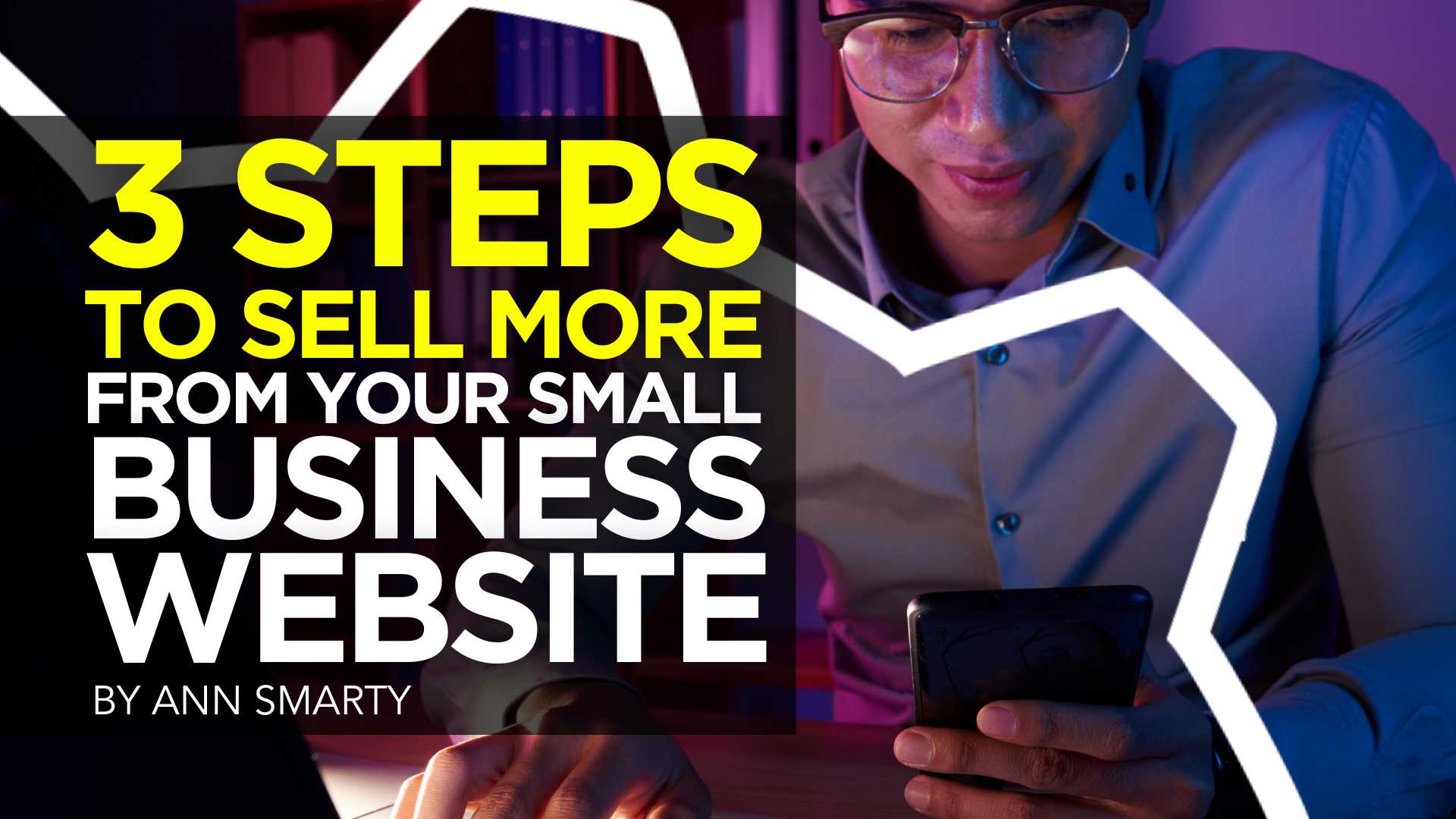

Digital marketing is becoming more and more competitive.
According to Census Bureau’s data, almost 5.5 million new business applications were filed in 2021, which is a 53% increase from 2019.
Hit by global lockdowns and deprived of most traditional means of attracting customers, most of those businesses turned to the Internet in an effort to build traffic and sales.
This resulted in a higher than ever digital marketing competition.
How can a small business compete with that?
How can you generate sales from your small business website in this competitive environment?
Here are some solid ways to do that.
1. Formulate a Plan
Successful planners often make successful entrepreneurs, laying out detailed (yet actionable) goals every step of the way. The fact of the matter is that if you have numbers you want to hit, you’ll be much more likely to have them in mind and aim to reach them constantly.
Write them down and keep them somewhere so you can continually reference them throughout the year.
Create a Sales Plan
A sales plan is designed to outline your goals, tactics, audience, and potential hurdles. After laying out a sales plan, you’ll come away with concrete, measurable goals, including revenue targets and deadlines for hitting each metric.
You’ll also spend time identifying your target audience, which will be crucial for success in marketing. Creating a sales plan is a necessary first step in meeting your overall business goals.
Create a Prospecting Plan
Think of your prospecting strategy as a guidebook for your sales team (even if your sales team is just you). It should cover all of your preferred sales methodologies, as well as information on who to target.
Ask yourself which form of selling most closely aligns with your business and its goals, from cold-calling to trade shows, to a 100-percent-digital strategy.
2. Market Your Business
Building a good marketing strategy really comes down to two crucial factors:
- Understanding your audience
- Getting your product or service in front of your target audience.
Anything you can do to gather information on your target demographic and then to effectively, affordably market to them will get you ahead in marketing.
Leverage 360-Degree Digital Marketing
Depending on the type of business you operate, you can probably get away with a fully digital marketing strategy. Focus on the most affordable methods first, such as building out your social media and local business profiles.
Social media is the best option for connecting with current, and future, customers. Consider pay-per-click and performance-based marketing options, such as affiliate marketing. This will help you get your product or service in front of a bigger audience for a much lower up-front spend.


Become A Certified E-Commerce Marketing Master
The Industry’s Most Comprehensive E-Commerce Marketing Certification For The Modern Marketer. Turn Products Into Profit, Browsers Into Buyers, & Past Purchasers Into Life-Long Customers.
Make Sure You Have a Loyalty Building Plan in Place
It is hard (and in many niches impossible) for small businesses to develop solid and consistent traffic generation methods.
So focus on retaining those customers that did find you and turning them into brand advocates.
There are many ways to achieve that, so create your strategy based on your business and product specifics:
- Set up a dedicated spot for your customers to become part of your community
- Use a solid CRM solution to organize customer relationship management process and identify steps where it may be failing
- Reply to comments and reviews when your customers are discussing your product or asking questions
- Encourage user-generated content by offering perks in exchange for sharing an unboxing video, a photo review of your product or a tutorial on making the most of it.
- Offer exclusive deals and packages. vcita offers a “Packages” feature that allows small businesses to bundle several services together and sell them as a package deal online at a discounted price. You can use vcita to create unique packages for your return users:


Research Niche Gaps and Competitors’ Fails
What are your competitors missing? Which features or products are they seeking and failing to find? You can actually turn the poorest experience into a business opportunity, if you learn to identify that opportunity.
Researching niche gaps is a great way to find a sweet spot for your business to stand out. SE Ranking competitive research tool allows you to identify your competitors’ strongest and weakest side.


You can also use its keyword research tool to find searchable keywords that don’t have much competition (this is a great way to find what’s on demand but without a solid offering).
Social media listening is another great way to find customers who are dissatisfied with your competitors and identify what your competitors are doing wrong (and how you could fit in):


Make Sure People Can Find Your Business
Start by implementing the basics, including a well-optimized website and a detailed listing on Google’s My Business Profile platform (if you are operating a local business).
Optimizing your website through proven search engine optimization (SEO) tactics—such as including relevant keywords and building out detailed, useful pages—is an easy way to ensure that people can find your business.
Plus, besides the time you spend writing the copy, it’s free! This is also extremely important for small businesses. Text Optimizer is a great tool to help you create a highly-relevant copy:


Encourage Cross-Business Collaboration
As a small business owner, you may not have a ton of employees but it is still important to keep them excited and motivated. Encourage your employees to submit content ideas, feature your team members on your social media profiles, let them contribute to your social media channels, etc.
Keep your team together even if you don’t have an office. Your employees need to be part of the family, and an effective communication strategy is vital for any business. Nextiva offers affordable small business communication solutions which will keep your team together:


3. Analyze & Adapt
Too often, businesses funnel big money into marketing and development without investing in detailed tracking and analytics. But you need both to thrive.
Why does data matter so much for boosting sales? Because it allows you to measure—usually, in concrete numbers—exactly what’s working and what’s not working, and then it forces you to adapt accordingly.
Be sure to track your results over time, so you know what strategies are working or if you need to pivot your plan. It is important to keep in mind seasonality, or any other factors, that naturally fluctuate your business, so you can accurately predict results.
Invest in Analytics Tools
Luckily, many digital marketing platforms include built-in analytics, but what about when you’re trying to track something that’s not single-platform based? Often, you can add tools and plug-ins to your website or store to keep track of where sales are coming from and other metrics.
Using a comprehensive Rank Tracker that can connect many data points (rankings, traffic, conversions, etc.) is also essential:


Track All Demographics
As long as you have permission from your user or consumer, you can gather as much demographic information as possible. Pay close attention to patterns that emerge with regard to age, gender, geographic information, income, and education level.
This will help you figure out exactly where to funnel your promotional dollars, including which social media platforms to advertise on and which affiliate websites or blogs to partner with.
Put Your Data to Use
What good is a fleshed-out set of data if you don’t put it to use? Make sure you’re using every single finding to keep your business agile, adjusting as needed to different consumer preferences and market trends.
Be patient with your analytics, keeping a close eye but not being obsessive. In time, you’ll have a solid bank of information that will tell an obvious story about where you should take your business next.
Ask for Feedback and Focus on the Customer
A good sales strategy is one that serves both the seller and the consumer. As you’re going through your first year or two in business, make sure to always keep your ears open to feedback, focusing on specific ways you can improve the customer experience.
Remember that happy customers tell their friends when they’re both satisfied and dissatisfied with a business, so keeping them smiling can help you grow your sales exponentially without you having to do anything at all!
User experience is a vital part of business success both on the web and in real life. If a customer had a positive experience and can leave a review, that will be invaluable when others are looking for similar products.
Positively interacting with customers and ensuring their satisfaction, will not only encourage them to return but also recommend your products to others.
Even though the Internet is getting super competitive, there are still a lot of opportunities to start a successful home-based business and set up a small business that will stand out. All you need is a plan, a solid technology partner and a good team!
MARKETING
18 Events and Conferences for Black Entrepreneurs in 2024

Welcome to Breaking the Blueprint — a blog series that dives into the unique business challenges and opportunities of underrepresented business owners and entrepreneurs. Learn how they’ve grown or scaled their businesses, explored entrepreneurial ventures within their companies, or created side hustles, and how their stories can inspire and inform your own success.
It can feel isolating if you’re the only one in the room who looks like you.
MARKETING
IAB Podcast Upfront highlights rebounding audiences and increased innovation
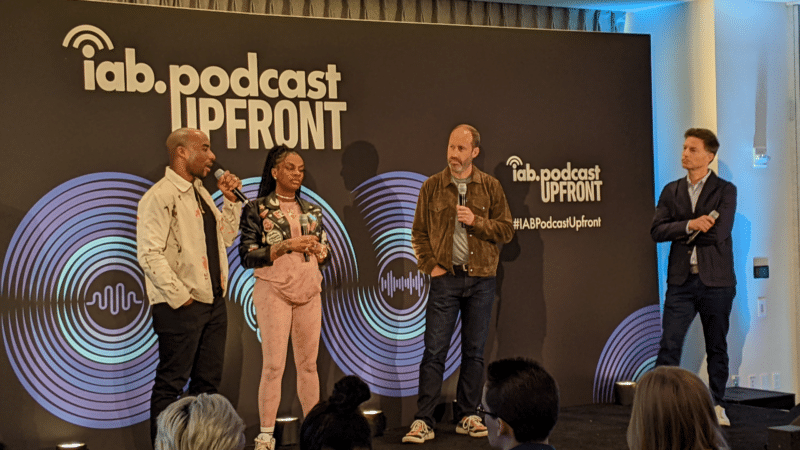
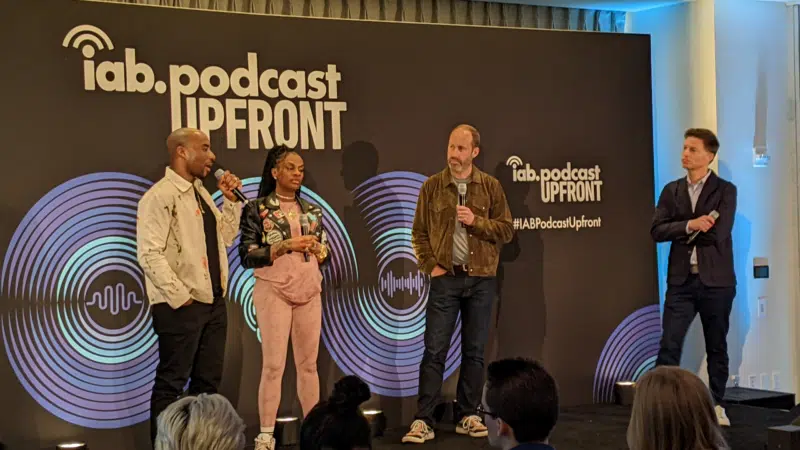
Podcasts are bouncing back from last year’s slowdown with digital audio publishers, tech partners and brands innovating to build deep relationships with listeners.
At the IAB Podcast Upfront in New York this week, hit shows and successful brand placements were lauded. In addition to the excitement generated by stars like Jon Stewart and Charlamagne tha God, the numbers gauging the industry also showed promise.
U.S. podcast revenue is expected to grow 12% to reach $2 billion — up from 5% growth last year — according to a new IAB/PwC study. Podcasts are projected to reach $2.6 billion by 2026.
The growth is fueled by engaging content and the ability to measure its impact. Adtech is stepping in to measure, prove return on spend and manage brand safety in gripping, sometimes contentious, environments.
“As audio continues to evolve and gain traction, you can expect to hear new innovations around data, measurement, attribution and, crucially, about the ability to assess podcasting’s contribution to KPIs in comparison to other channels in the media mix,” said IAB CEO David Cohen, in his opening remarks.
Comedy and sports leading the way
Podcasting’s slowed growth in 2023 was indicative of lower ad budgets overall as advertisers braced for economic headwinds, according to Matt Shapo, director, Media Center for IAB, in his keynote. The drought is largely over. Data from media analytics firm Guideline found podcast gross media spend up 21.7% in Q1 2024 over Q1 2023. Monthly U.S. podcast listeners now number 135 million, averaging 8.3 podcast episodes per week, according to Edison Research.
Comedy overtook sports and news to become the top podcast category, according to the new IAB report, “U.S. Podcast Advertising Revenue Study: 2023 Revenue & 2024-2026 Growth Projects.” Comedy podcasts gained nearly 300 new advertisers in Q4 2023.
Sports defended second place among popular genres in the report. Announcements from the stage largely followed these preferences.
Jon Stewart, who recently returned to “The Daily Show” to host Mondays, announced a new podcast, “The Weekly Show with Jon Stewart,” via video message at the Upfront. The podcast will start next month and is part of Paramount Audio’s roster, which has a strong sports lineup thanks to its association with CBS Sports.
Reaching underserved groups and tastes
IHeartMedia toasted its partnership with radio and TV host Charlamagne tha God. Charlamagne’s The Black Effect is the largest podcast network in the U.S. for and by black creators. Comedian Jess Hilarious spoke about becoming the newest co-host of the long-running “The Breakfast Club” earlier this year, and doing it while pregnant.
The company also announced a new partnership with Hello Sunshine, a media company founded by Oscar-winner Reese Witherspoon. One resulting podcast, “The Bright Side,” is hosted by journalists Danielle Robay and Simone Boyce. The inspiration for the show was to tell positive stories as a counterweight to negativity in the culture.
With such a large population listening to podcasts, advertisers can now benefit from reaching specific groups catered to by fine-tuned creators and topics. As the top U.S. audio network, iHeartMedia touted its reach of 276 million broadcast listeners.
Connecting advertisers with the right audience
Through its acquisition of technology, including audio adtech company Triton Digital in 2021, as well as data partnerships, iHeartMedia claims a targetable audience of 34 million podcast listeners through its podcast network, and a broader audio audience of 226 million for advertisers, using first- and third-party data.
“A more diverse audience is tuning in, creating more opportunities for more genres to reach consumers — from true crime to business to history to science and culture, there is content for everyone,” Cohen said.
The IAB study found that the top individual advertiser categories in 2023 were Arts, Entertainment and Media (14%), Financial Services (13%), CPG (12%) and Retail (11%). The largest segment of advertisers was Other (27%), which means many podcast advertisers have distinct products and services and are looking to connect with similarly personalized content.
Acast, the top global podcast network, founded in Stockholm a decade ago, boasts 125,000 shows and 400 million monthly listeners. The company acquired podcast database Podchaser in 2022 to gain insights on 4.5 million podcasts (at the time) with over 1.7 billion data points.
Measurement and brand safety
Technology is catching up to the sheer volume of content in the digital audio space. Measurement company Adelaide developed its standard unit of attention, the AU, to predict how effective ad placements will be in an “apples to apples” way across channels. This method is used by The Coca-Cola Company, NBA and AB InBev, among other big advertisers.
In a study with National Public Media, which includes NPR radio and popular podcasts like the “Tiny Desk” concert series, Adelaide found that NPR, on average, scored 10% higher than Adelaide’s Podcast AU Benchmarks, correlating to full-funnel outcomes. NPR listeners weren’t just clicking through to advertisers’ sites, they were considering making a purchase.
Advertisers can also get deep insights on ad effectiveness through Wondery’s premium podcasts — the company was acquired by Amazon in 2020. Ads on its podcasts can now be managed through the Amazon DSP, and measurement of purchases resulting from ads will soon be available.
The podcast landscape is growing rapidly, and advertisers are understandably concerned about involving their brands with potentially controversial content. AI company Seekr develops large language models (LLMs) to analyze online content, including the context around what’s being said on a podcast. It offers a civility rating that determines if a podcast mentioning “shootings,” for instance, is speaking responsibly and civilly about the topic. In doing so, Seekr adds a layer of confidence for advertisers who would otherwise pass over an opportunity to reach an engaged audience on a topic that means a lot to them. Seekr recently partnered with ad agency Oxford Road to bring more confidence to clients.
“When we move beyond the top 100 podcasts, it becomes infinitely more challenging for these long tails of podcasts to be discovered and monetized,” said Pat LaCroix, EVP, strategic partnerships at Seekr. “Media has a trust problem. We’re living in a time of content fragmentation, political polarization and misinformation. This is all leading to a complex and challenging environment for brands to navigate, especially in a channel where brand safety tools have been in the infancy stage.”
Dig deeper: 10 top marketing podcasts for 2024
MARKETING
Foundations of Agency Success: Simplifying Operations for Growth


Why do we read books like Traction, Scaling Up, and the E-Myth and still struggle with implementing systems, defining processes, and training people in our agency?
Those are incredibly comprehensive methodologies. And yet digital agencies still suffer from feast or famine months, inconsistent results and timelines on projects, quality control, revisions, and much more. It’s not because they aren’t excellent at what they do. I
t’s not because there isn’t value in their service. It’s often because they haven’t defined the three most important elements of delivery: the how, the when, and the why.
Complicating our operations early on can lead to a ton of failure in implementing them. Business owners overcomplicate their own processes, hesitate to write things down, and then there’s a ton of operational drag in the company.
Couple that with split attention and paper-thin resources and you have yourself an agency that spends most of its time putting out fires, reacting to problems with clients, and generally building a culture of “the Founder/Creative Director/Leader will fix it” mentality.
Before we chat through how truly simple this can all be, let’s first go back to the beginning.
When we start our companies, we’re told to hustle. And hustle hard. We’re coached that it takes a ton of effort to create momentum, close deals, hire people, and manage projects. And that is all true. There is a ton of work that goes into getting a business up and running.


The challenge is that we all adopt this habit of burning the candle at both ends and the middle all for the sake of growing the business. And we bring that habit into the next stage of growth when our business needs… you guessed it… exactly the opposite.
In Mike Michalowitz’s book, Profit First he opens by insisting the reader understand and accept a fundamental truth: our business is a cash-eating monster. The truth is, our business is also a time-eating monster. And it’s only when we realize that as long as we keep feeding it our time and our resources, it’ll gobble everything up leaving you with nothing in your pocket and a ton of confusion around why you can’t grow.
Truth is, financial problems are easy compared to operational problems. Money is everywhere. You can go get a loan or go create more revenue by providing value easily. What’s harder is taking that money and creating systems that produce profitably. Next level is taking that money, creating profit and time freedom.
In my bestselling book, The Sabbatical Method, I teach owners how to fundamentally peel back the time they spend in their company, doing everything, and how it can save owners a lot of money, time, and headaches by professionalizing their operations.
The tough part about being a digital agency owner is that you likely started your business because you were great at something. Building websites, creating Search Engine Optimization strategies, or running paid media campaigns. And then you ended up running a company. Those are two very different things.


How to Get Out of Your Own Way and Create Some Simple Structure for Your Agency…
- Start Working Less
I know this sounds really brash and counterintuitive, but I’ve seen it work wonders for clients and colleagues alike. I often say you can’t see the label from inside the bottle and I’ve found no truer statement when it comes to things like planning, vision, direction, and operations creation.
Owners who stay in the weeds of their business while trying to build the structure are like hunters in the jungle hacking through the brush with a machete, getting nowhere with really sore arms. Instead, define your work day, create those boundaries of involvement, stop working weekends, nights and jumping over people’s heads to solve problems.
It’ll help you get another vantage point on your company and your team can build some autonomy in the meantime.
- Master the Art of Knowledge Transfer
There are two ways to impart knowledge on others: apprenticeship and writing something down. Apprenticeship began as a lifelong relationship and often knowledge was only retained by ONE person who would carry on your method.
Writing things down used to be limited (before the printing press) to whoever held the pages.
We’re fortunate that today, we have many ways of imparting knowledge to our team. And creating this habit early on can save a business from being dependent on any one person who has a bunch of “how” and “when” up in their noggin.
While you’re taking some time to get out of the day-to-day, start writing things down and recording your screen (use a tool like loom.com) while you’re answering questions.


Deposit those teachings into a company knowledge base, a central location for company resources. Some of the most scaleable and sellable companies I’ve ever worked with had this habit down pat.
- Define Your Processes
Lean in. No fancy tool or software is going to save your company. Every team I’ve ever worked with who came to me with a half-built project management tool suffered immensely from not first defining their process. This isn’t easy to do, but it can be simple.
The thing that hangs up most teams to dry is simply making decisions. If you can decide how you do something, when you do it and why it’s happening that way, you’ve already won. I know exactly what you’re thinking: our process changes all the time, per client, per engagement, etc. That’s fine.
Small businesses should be finding better, more efficient ways to do things all the time. Developing your processes and creating a maintenance effort to keep them accurate and updated is going to be a liferaft in choppy seas. You’ll be able to cling to it when the agency gets busy.
“I’m so busy, how can I possibly work less and make time for this?”


You can’t afford not to do this work. Burning the candle at both ends and the middle will catch up eventually and in some form or another. Whether it’s burnout, clients churning out of the company, a team member leaving, some huge, unexpected tax bill.
I’ve heard all the stories and they all suck. It’s easier than ever to start a business and it’s harder than ever to keep one. This work might not be sexy, but it gives us the freedom we craved when we began our companies.
Start small and simple and watch your company become more predictable and your team more efficient.
-

 PPC6 days ago
PPC6 days agoHow the TikTok Algorithm Works in 2024 (+9 Ways to Go Viral)
-

 SEO6 days ago
SEO6 days agoBlog Post Checklist: Check All Prior to Hitting “Publish”
-

 SEO5 days ago
SEO5 days agoHow to Use Keywords for SEO: The Complete Beginner’s Guide
-

 MARKETING6 days ago
MARKETING6 days agoHow To Protect Your People and Brand
-

 PPC7 days ago
PPC7 days agoHow to Craft Compelling Google Ads for eCommerce
-

 SEARCHENGINES7 days ago
SEARCHENGINES7 days agoGoogle Started Enforcing The Site Reputation Abuse Policy
-

 MARKETING6 days ago
MARKETING6 days agoElevating Women in SEO for a More Inclusive Industry
-

 PPC6 days ago
PPC6 days agoHow to Brainstorm Business Ideas: 9 Fool-Proof Approaches





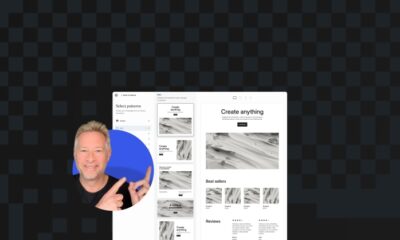

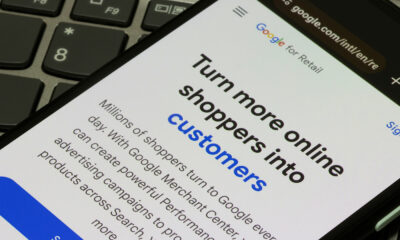






You must be logged in to post a comment Login